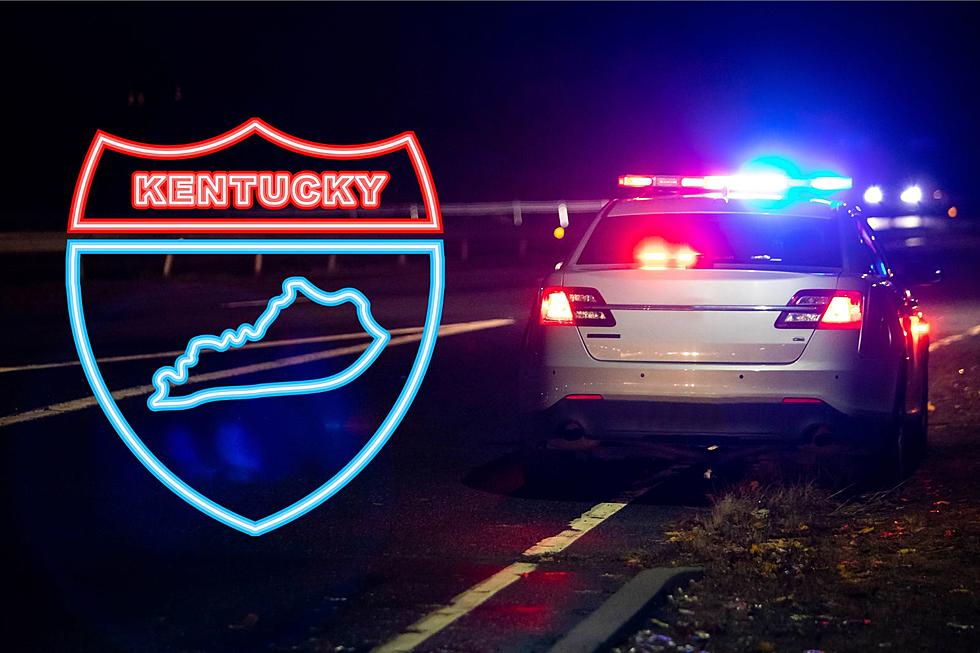
KY Right-of-Way Laws Regarding Emergency Vehicles
I came up on an all-too-familiar traffic situation recently. I was on the U.S. 60 bypass--well, it's just U.S. 60 now--and there were a LOT of vehicles. It was unusually busy, I thought.
I had moved into the left lane to pass and then came upon a state police cruiser. Like everyone else behind it, I slowed down. Also, I matched the officer's speed, but I didn't immediately pass him. Eventually, the cruiser was forced to slow down because of the vehicle in front of him. I then passed the officer while going the speed limit which is 65 MPH.
Kentucky Law and Passing Emergency Vehicles
It's not something I have typically ever done, but I feel like if I'm driving the legal limit, I'm fine. And I am. There is no law that says you cannot pass an emergency vehicle--I'd imagine police cruisers are top of mind with everyone on this particular topic--if it is not in the process of dealing with an emergency. Do I think it's a good idea to pass a cop NOT responding to an emergency while driving OVER the speed limit? No. I call that pressing my luck.
But yes, if the lights and sirens are going, Kentucky law says motorists may not pass an emergency vehicle. (And you might not be able to, anyway; they, uh, go pretty fast in those situations.)
You’re never allowed to pass a moving emergency vehicle while it’s using its lights and siren. You may be allowed to pass one if it’s parked and the emergency personnel directing traffic are waving you past the parked vehicle.
Kentucky Law and Right-of-Way to Emergency Vehicles
Kentucky revised statute 189.930 (A) spells it out for us with regard to the specifics about giving emergency vehicles the right of way. The short answer is, of course, ALWAYS DO IT. But the statute, naturally, dives deeper:
Upon the approach of an emergency vehicle equipped with, and operating, one or more flashing, rotating, or oscillating red or blue lights, visible under normal conditions from a distance of 500 feet to the front of such vehicle; and the driver is given audible signal by siren, exhaust whistle, or bell, the driver of every other vehicle shall yield the right-of-way, immediately drive to a position parallel to, and as close as possible to, the edge or curve of the highway clear of any intersection, and stop and remain in this position until the emergency vehicle has passed, except when otherwise directed by a police officer or firefighter.
Also--and this, I hope, goes without saying--you always yield at intersections regardless of what color the traffic light is.
Kentucky Law and Tailing an Emergency Vehicle
Several years ago, a friend of mine was given a verbal warning because she was driving too closely behind a police car. The cruiser in question was not, however, in the process of heading toward an emergency. If that HAD been the case, and she was traveling fewer than 500 feet behind the vehicle, she would have been in violation:
No operator of any vehicle, unless he is on official business, shall follow any emergency vehicle being operated in conformity with the provisions of § 70.05 (A) closer than 500 feet, nor shall he drive into, or park the vehicle into, or park the vehicle within, the block where the vehicle has stopped in answer to an emergency call or alarm unless he is directed otherwise by a police officer or firefighter.
Every once in a while, I'll see something in traffic that leads me to dig into what Kentucky traffic laws have to say about any given situation. I hope this has cleared some stuff up for you just like it did for me.

